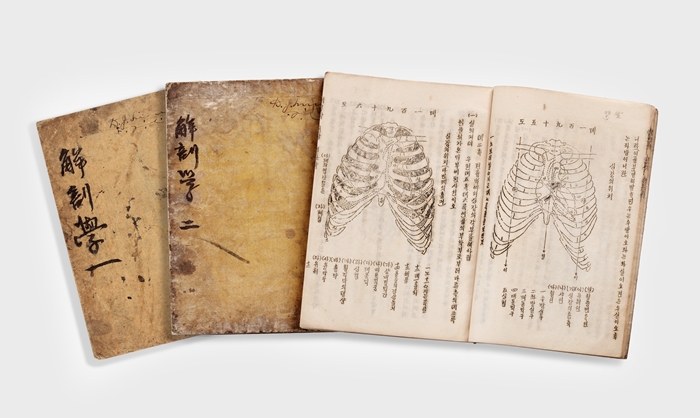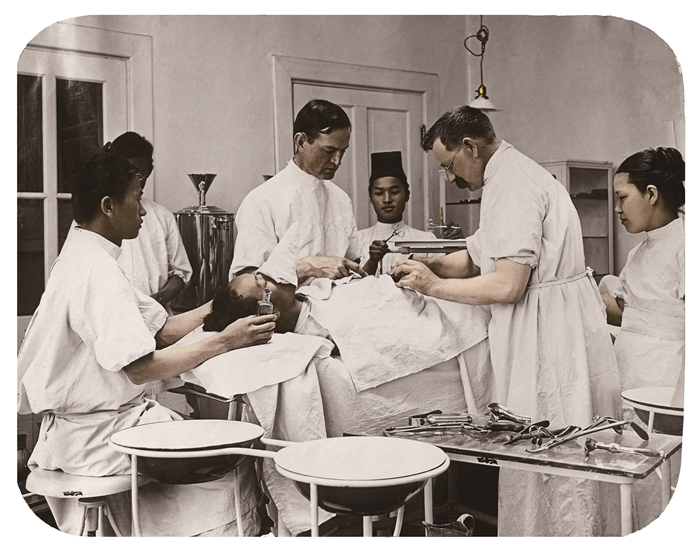
The 'Haebuhak' is the first book about the human anatomy written in Hangeul. (National Hangeul Museum)
By Kang Gahui and Hahm Hee-eun
Seoul | Aug. 13, 2018
Surgery in modern medicine involves cutting directly into the body's surface, fixing the internal organs, and sewing it all up again. This all came as a huge shock to East Asian and Joseon doctors during the late 19th century. Traditional medicine had it that one’s body and mind were one, and hence it used indirect methods, such as herbal medicines or medical needles, to "balance" the body.
With the introduction of modern science to Joseon, the perspective of the body changed dramatically. New names and labels were given to every small part of the body. Words like cell, nerve, abdominal and bicep all entered the Korean language during this period of time, and they've now become basic parts of everyday life.
The National Hangeul Museum is currently hosting an exhibition called "I am the Body: The Anatomy of Hangeul in the Enlightenment Period." It introduces how the Korean language grew and developed to be able to talk about modern science, and how these changes took place at the intersection between traditional Joseon and modern medicine.
At the entrance of the exhibition hall, there's a screen that shows a video of a virtual murder scene that occurred at the Sontag Hotel, the first modern hotel in Joseon. The video shows how a traditional medical officer and modern doctor used different terms and approaches to examine the body, helping the visitors to understand the differences between traditional and modern medical science during the 19th century.
The exhibition is composed of three parts.
Passing by the screen, part one, “A new era in Knowledge of the Human Body,” compares the differences between traditional values of the body and the viewpoint of modern medical science. Then, in part two, “Redefining the Human Body,” it shows the changes in the Korean language that took place in order to refer to body parts, from the beginning of the creation of Hangeul through to the late 19th century, the Age of Enlightenment in parts of Europe. In part three, “The First Anatomy Textbook in Hangeul,” it shows medical textbooks written in Korean that were published in the late 19th century.
Although traditional ways of thinking about the body have gradually modernized with the introduction of the scientific method and modern medicine, traditional perspectives about certain parts of the body, such as the brain, liver or gall bladder, still exist in some Korean expressions that are used daily. For instance, the expression “a weak heart” refers to people who may be timid or shy. “Wind in the heart” means that your heart does not function properly because you're too excited.
The exhibition will continue until Oct. 14, and is open to all visitors, free of charge.

Canadian missionary Dr. Oliver Avison conducts an operation. (Dong-Eun Medical Museum)
kgh89@korea.kr